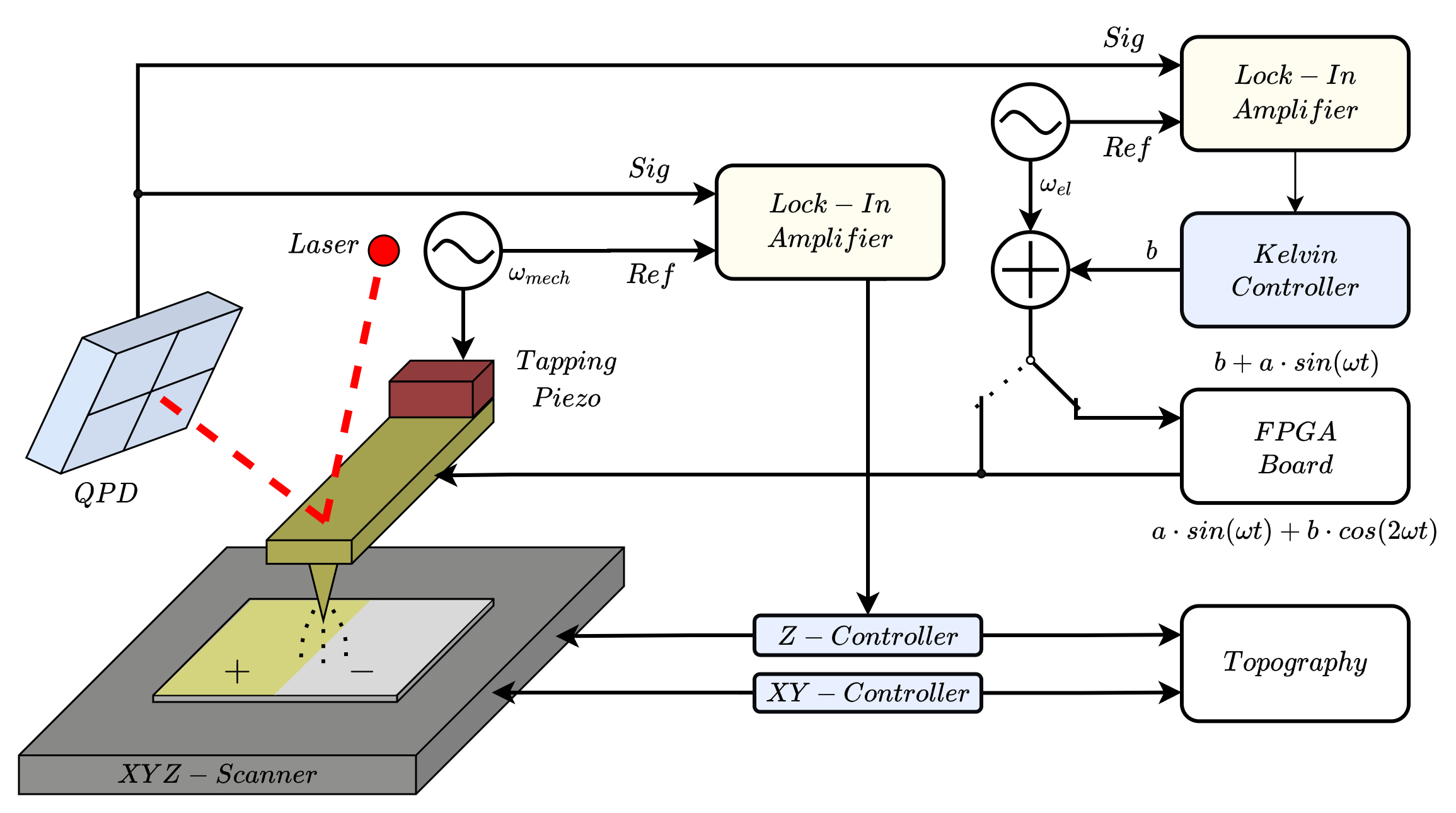AC-KPFM
Project goals
- Development of electrical Atomic Force Microscopy (AFM) modes – KPFM
- Sensing electrical charge distributions at the nanoscale in aqueous environment
- In-vitro observations of biological cells
Description
Many fundamental processes in nature rely on the interaction between surface charges at the nanoscale, whether it is about functionalization of a materials surface to make it more durable (corrosion resistant) or the interaction of a biological cells with its environment. Surface charges play a key role in such cases, as they drive electrostatic forces which have direct impact on the behaviour of the carrier. With the ability to measure the local surface potential distribution on cells in their natural environment, one could investigate the influence of specific treatments on the systems behaviour.

Schematic Implementation of the AC-KPFM principle in an AFM using an external FPGA board.
This project aims towards the development of electric Atomic Force Microscopy modes for quantitative charge distribution measurements in liquids, or more specific, aqueous solutions with varying ionic concentration. To this end, studies are carried out regarding the formation of electric double layers (EDLs), movement of solvated ions and influence of measurement parameters (electrical drive frequencies,…).
Use cases
- In-vitro studies of biological cells or corrosion processes
- Research applications in biological / material sciences
Related Publications
- D. Kohl, P. Mesquida, and G. Schitter, Quantitative DC-free Kelvin Probe Force Microscopy, in Final Program 42nd International Conference on Micro and Nano Engineering, 2016.
[BibTex]@InProceedings{TUW-254059, Title = {Quantitative DC-free Kelvin Probe Force Microscopy}, Author = {Kohl, Dominik and Mesquida, Patrick and Schitter, Georg}, Booktitle = {Final Program 42nd International Conference on Micro and Nano Engineering}, Year = {2016}, Note = {Vortrag: Micro and Nano Engineering 2016, VIenna; 2016-09-19 -- 2016-09-23}, Doi = {10.1016/j.mee.2017.01.005}, Numpages = {2} }
Project partner
- Physics Department, King’s College London (Dr. P. Mesquida)
Funding
- Austrian Science Fund (FWF) – Project No. P 31238-N28
Contact
Univ.-Prof. Dipl.-Ing. Dr.sc.techn. Georg SchitterDipl.-Ing. BSc. Thomas Hackl
Project Staff
Dipl.-Ing. BSc. Thomas HacklDr.sc.techn. Patrick Mesquida
Dipl.-Ing. Mathias Poik